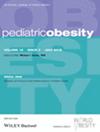Prediction of resting energy expenditure for adolescents with severe obesity: A multi-centre analysis
Abstract
Background and Objectives
Resting energy expenditure (REE) assessments can help inform clinical treatment decisions in adolescents with elevated body mass index (BMI), but current equations are suboptimal for severe obesity. We developed a predictive REE equation for youth with severe obesity and obesity-related comorbidities and compared results to previously published predictive equations.
Methods
Data from indirect calorimetry, clinical measures, and body composition per Dual x-ray absorptiometry (DXA) were collected from five sites. Data were randomly divided into development (N = 438) and validation (N = 118) cohorts. A predictive equation was developed using Elastic Net regression, using sex, race, ethnicity, weight, height, BMI percent of the 95th%ile (BMIp95), waist circumference, hip circumference, waist/hip ratio, age, Tanner stage, fat and fat-free mass. This equation was verified in the validation cohort and compared with 11 prior equations.
Results
Data from the total cohort (n = 556, age 15 ± 1.7 years, 77% female, BMIp95 3.3 ± 0.94) were utilized. The best fit equation was REE = −2048 + 18.17 × (Height in cm) – 2.57 × (Weight in kg) + 7.88 × (BMIp95) + 189 × (1 = male, 0 = female), R2 = 0.466, and mean bias of 23 kcal/day.
Conclusion
This new equation provides an updated REE prediction that accounts for severe obesity and metabolic complications frequently observed in contemporary youth.

 求助内容:
求助内容: 应助结果提醒方式:
应助结果提醒方式:


